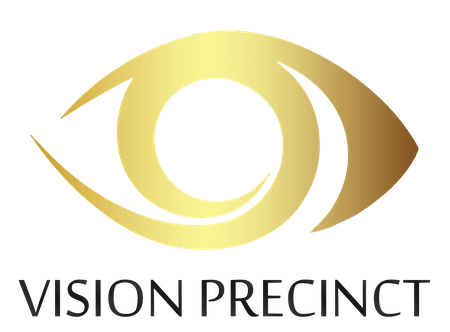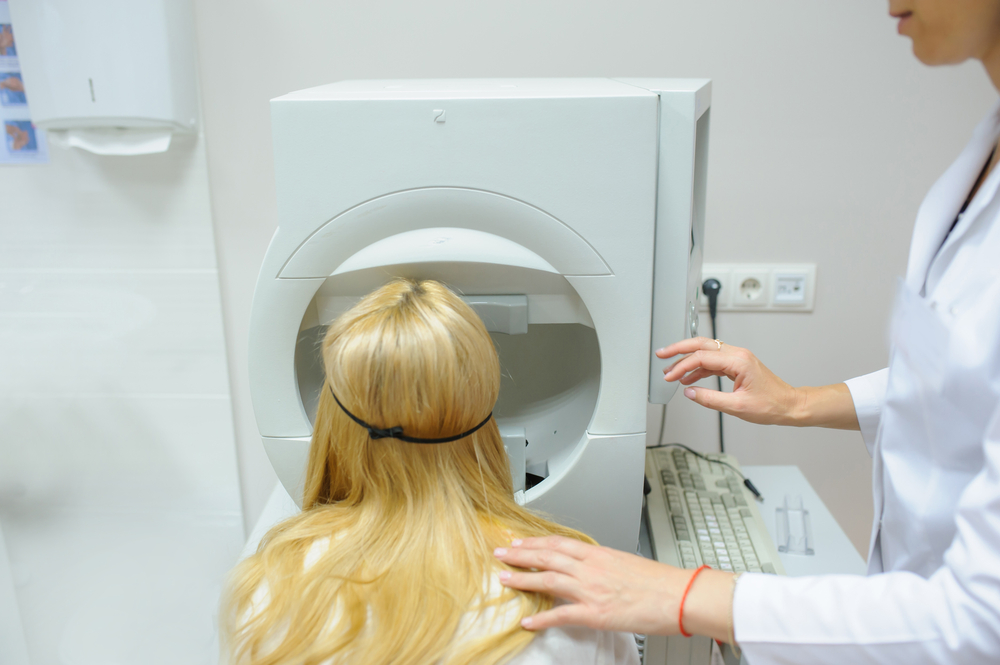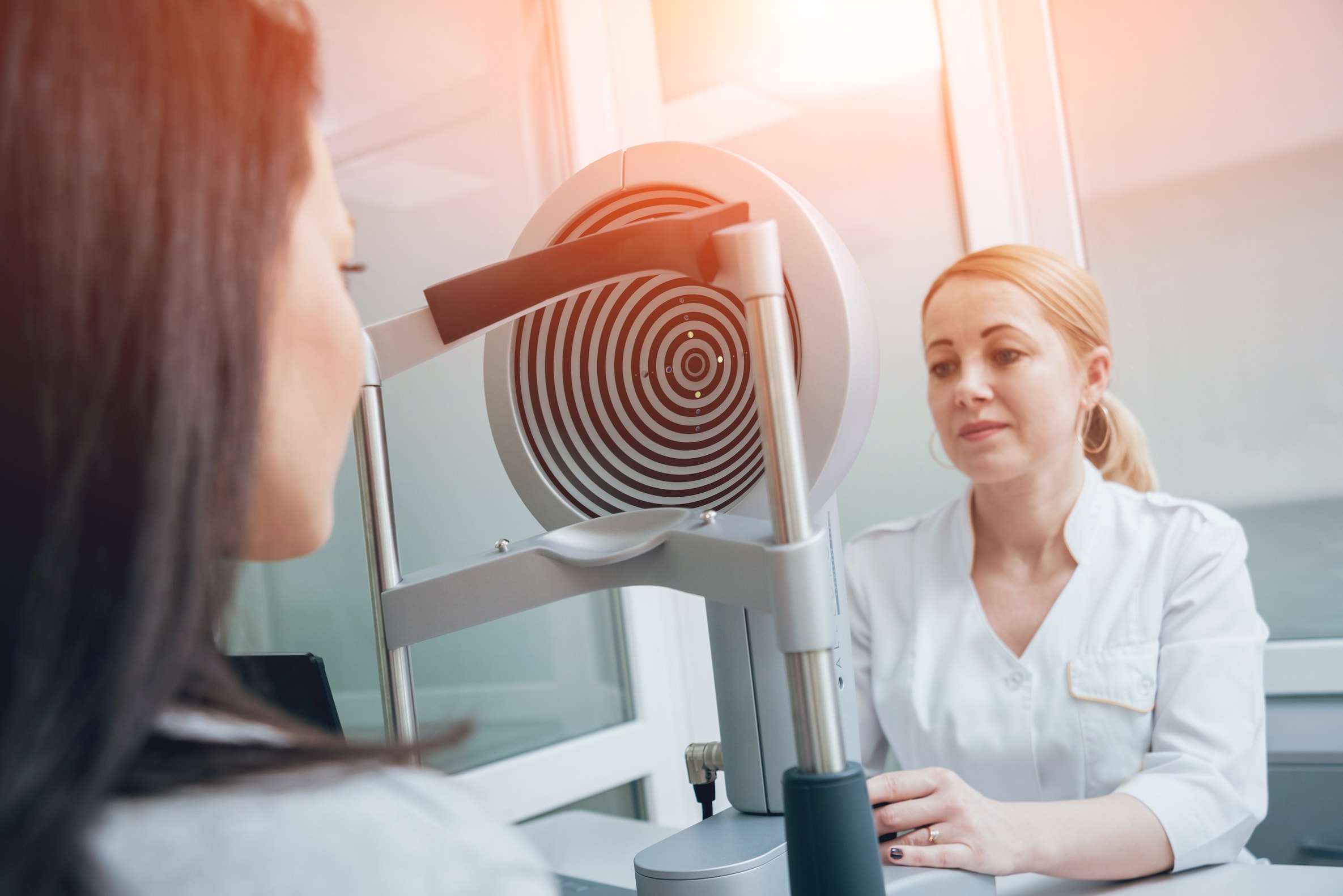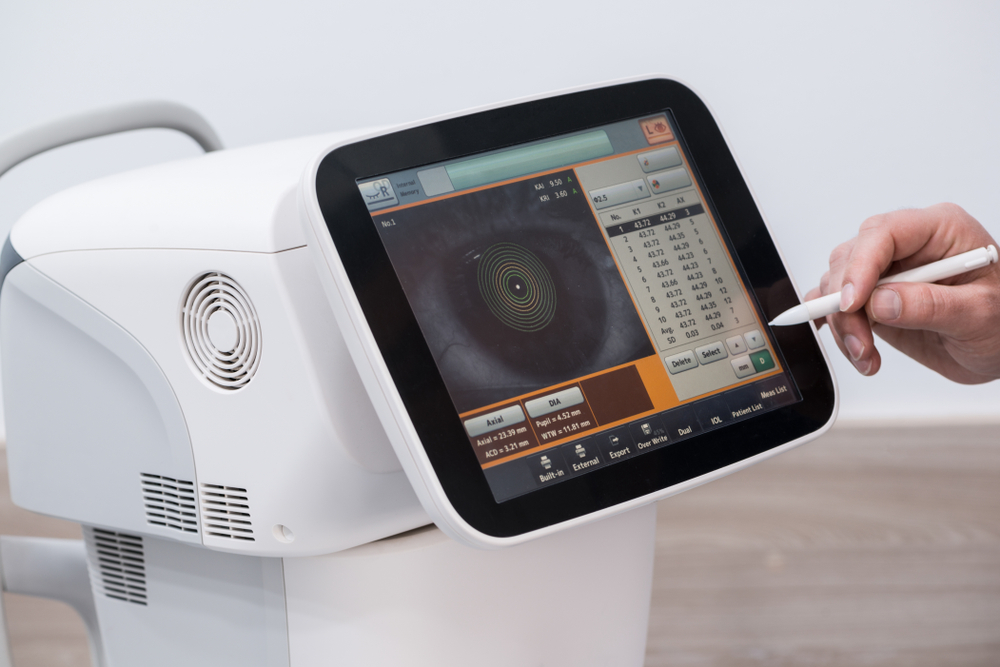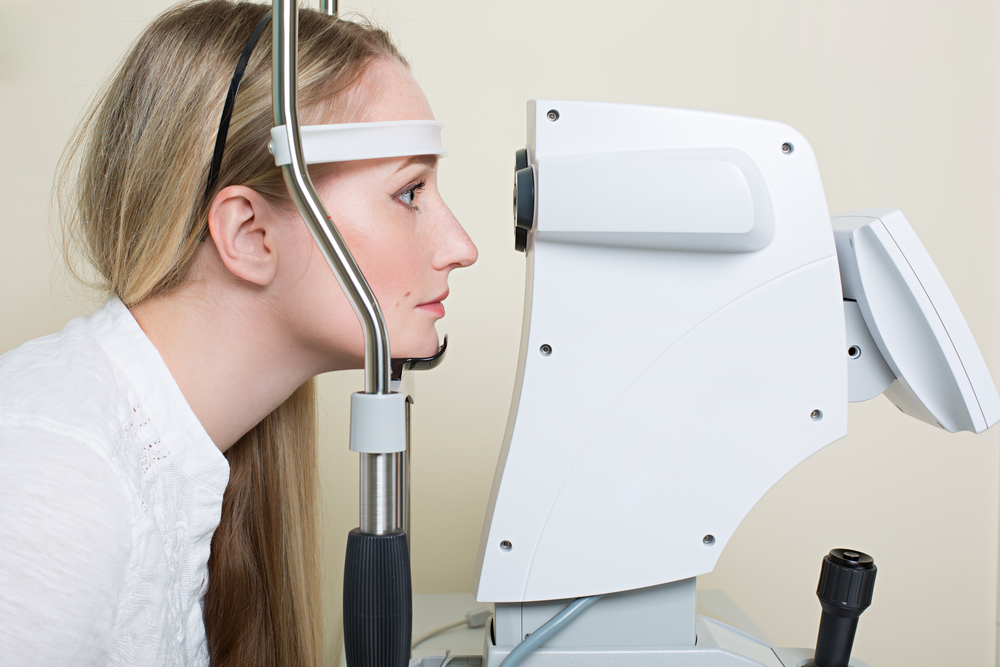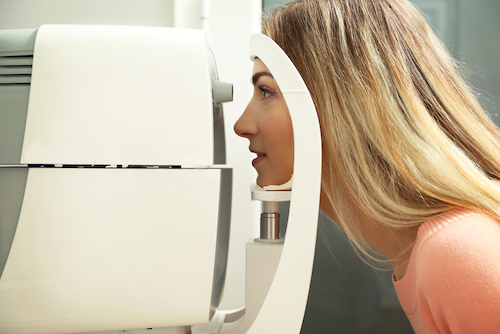Eye Technology
A visual field test maps out what your world looks like to you. It measures the area of vision, or how wide of an area your eye can see. The visual field shows changes that are not noticed by the patient until the damage is severe.
Other diseases, such as cataract, stroke, macular degeneration and diabetes, can also influence the visual field. Your doctor will take these possible effects on your exam when interpreting the results.
Corneal topography is a computer-assisted diagnostic tool that creates a three-dimensional map of the surface curvature of the cornea. An eye with normal vision has an evenly rounded cornea, but if the cornea is too flat, too steep, or unevenly curved, less than perfect vision results. The greatest advantage of corneal topography is its ability to detect irregular conditions invisible to most conventional testing.
Corneal topography produces a detailed, visual description of the shape and power of the cornea. This type of analysis provides your optometrist or ophthalmologist with very fine details regarding the condition of the corneal surface. These details are used to diagnose, monitor, and treat various eye conditions.
Conventional macro photography equipment and techniques are used to document the external appearance of the eyes and surrounding lid and facial structures.
It is commonly used to document lesions of the eye or surrounding tissues, demonstrate facial nerve anomalies, and record pre and post-surgical alignment of the eyes or eyelids.
Optical coherence tomography (OCT) is an optical analog of ultrasound imaging that uses low coherence interferometry to produce cross-sectional images of the retina. It is a quick, non-invasive and reproducible imaging tool for macular lesions and has become an essential part of retina practice.
OCT is often used to evaluate disorders of the optic nerve as well.
The OCT exam helps your optometrist see changes to the fibre of the optic nerve. It is useful in diagnosing many eye conditions, for example, it can detect changes caused by glaucoma.
A computer-controlled machine used during an eye examination to provide an objective measurement of a person’s refractive error and prescription for glasses or contact lenses. This is achieved by measuring how light is changed as it enters a person’s eye.
Dry eye is such a common problem, particularly as we get older. Traditionally the only treatment option available has been lubricant eye drops. However, nowadays we can also use the Blephasteam apparatus. Imagine a steam bath for your eyes…
This pair of specially designed goggles uses heat and moisture to warm the oil in our eyelids to the temperature needed to liquefy and unblock glands. Thus, relieving the symptoms of dry eyes and Meibomian Gland Dysfunction.
Tonometry is a test to measure the pressure inside your eyes, referred to as intraocular eye pressure (IOP). Measuring your eye pressure is an important part of a comprehensive eye examination.
If your eye pressure becomes higher than normal, you may be at risk for developing eye diseases such as glaucoma. High eye pressure can damage the delicate nerve fibres in the back of your eye, sometimes resulting in blindness.
